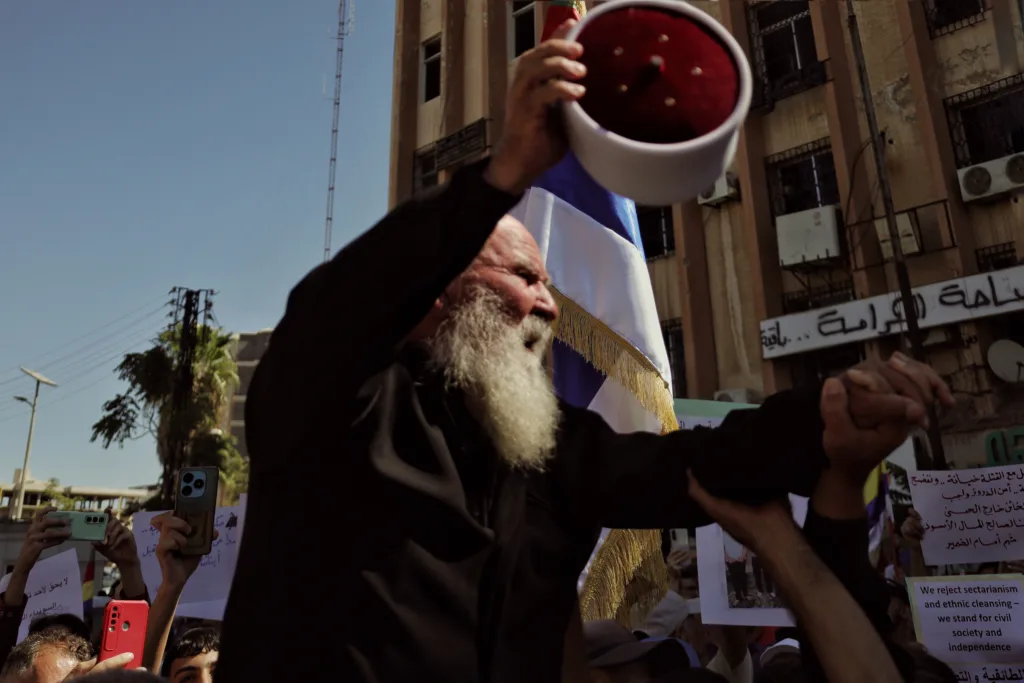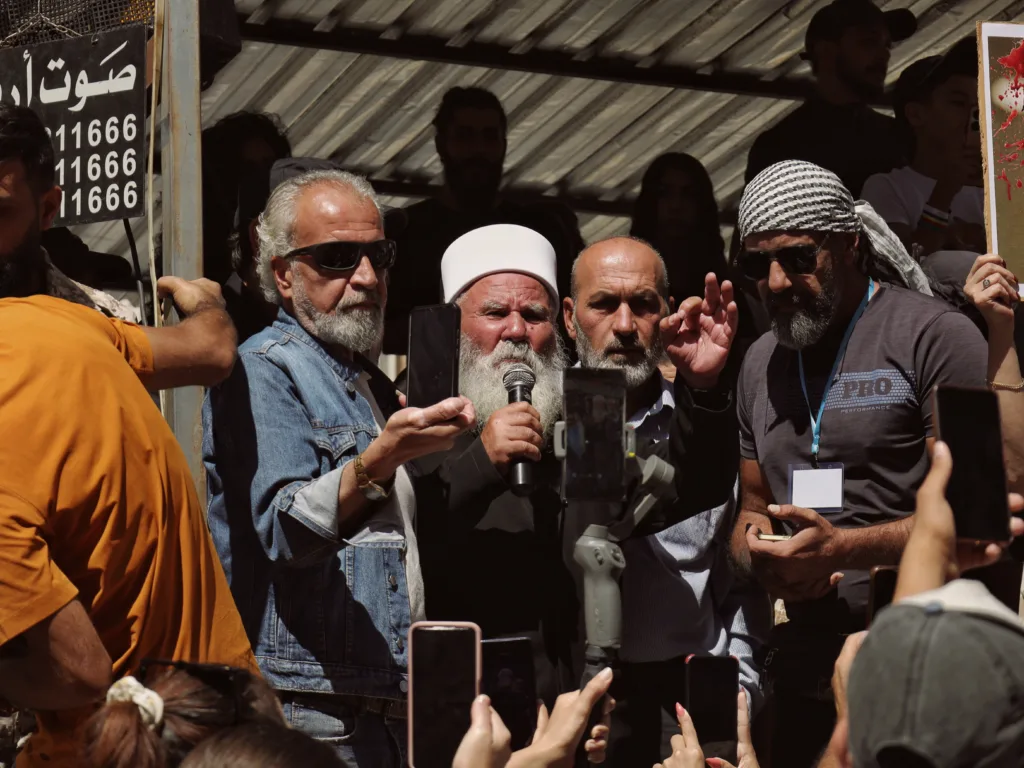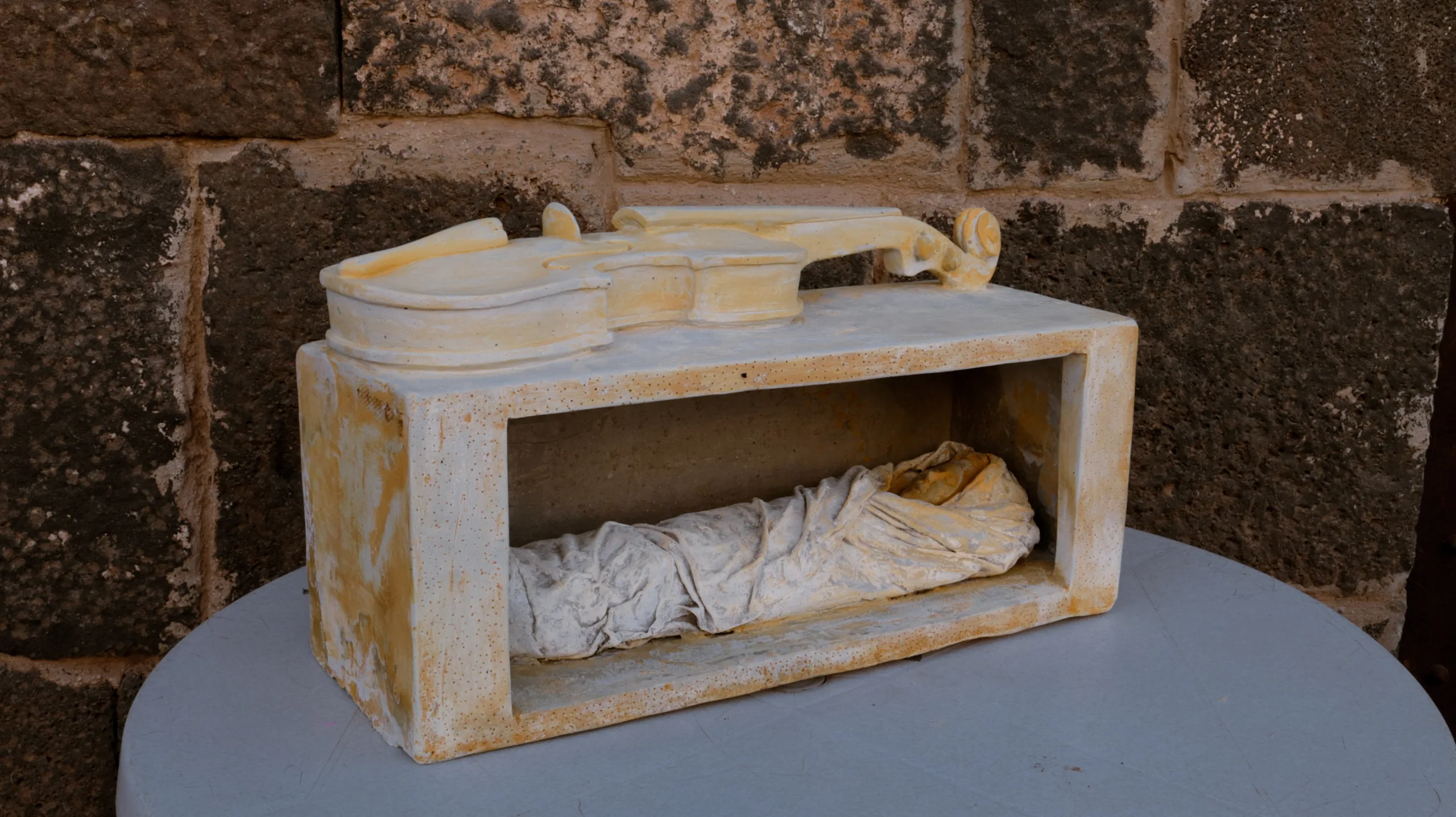In al-Karama Square in central Sweida, Sheikh Marhaf al-Shahin appeared carried on shoulders, then removed his turban and waved it among the crowd. The gesture struck observers as a declaration of the gravity of the violations against the people of Sweida and in the face of the repeated infringements targeting the city and its residents.
This act was not a passing event. It was an extension of a collective memory passed down among the people of Sweida.
Removing the turban has historically been tied to decisive moments. In 1906, the sheikhs placed their turbans on the floor of the madāfa, led by Abu Ali Mustafa al-Atrash, as a pledge to defend the dignity of the city. Then on 20 July 1925, turbans were thrown again on the eve of the Battle of al-Kafr against the French occupation, as a sign of declaring the fight.
In contemporary understanding, removing the turban is seen as a public announcement that a grave violation has occurred, whether against an individual or the whole community. The moment the turban is raised, it summons the heroism of the past and becomes an open cry of protest that says dignity has been violated and that defending it is a duty that cannot be abandoned.


From this starting point, many viewed Sheikh Marhaf al-Shahin’s act as carrying meanings deeper than a momentary protest. They saw it as an evocation of the memory of resistance and a sign that inherited customs are still called upon in moments of danger as a tool to protect society and safeguard its identity.
Between past and present, the turban in Sweida remains more than a traditional garment. It is a moral standard raised when individuals or the community face an affront to their dignity, a thread that ties the symbols of yesterday to the challenges of today.



